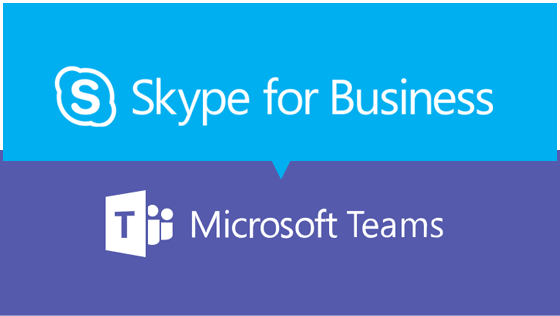Microsoft Teams Vs. Skype For Business
Back in 2017, Microsoft revealed that they intend to make Microsoft Teams its primary communications platform for organizations, replacing Skype for Business over time.
About Microsoft Teams
Supporting Microsoft’s intelligent communications project, Teams is the nucleus of efficient teamwork, bringing together chat, meetings, calling, collaboration, app integration, file sharing, storage etc. In case you are an existing Skype for Business user, you’re invited to upgrade to Microsoft Teams, to try the full suite of communication and collaboration capabilities in a single client experience.
When Microsoft Teams is used along with other advanced tools and features of Microsoft Office 365, a complete collaboration environment can be created. So, companies will no longer need to use Skype for Business or other voice/video specialized applications.
Microsoft Teams adds several other functionalities on top of Office 365 Groups. What it means is that Teams is giving users access to OneNote, SharePoint Online document libraries, Planner, and a whole bunch of other features such as unified presence, federated meetings (the ability to host and participate to meetings spanning multiple organizations) cloud-based meeting recording, direct routing, in-line translation feature that allows participants to discuss in their native language and many more.
Note: Officially, more than 200,000 companies utilize Teams.
Microsoft is constantly working at improving meetings with Teams and thanks to AI technology the future looks promising. Microsoft uses machine learning, cognitive services, and speech recognition to improve meetings experience and makes it easier to set them up and receive follow ups after the meeting has finished.
We shall see if they continue to upgrade Skype for Business as they are doing with Teams, because it seems that Microsoft doesn’t just want you to upgrade your Skype for Business client – they want you to use the complex solution which is Microsoft Teams to upgrade the way your team works.
How to upgrade
To simplify the transition, the company has released self-serve guidance for upgrading to Teams, along with upgrade tools in the Microsoft Teams and Skype for Business Admin Center, which are expected to be distributed to all Office 365 customers over the coming weeks.
Microsoft provides a complex framework to help you plan and execute the upgrade. The framework includes two options: Upgrade Basic dedicated for less complex environments and smaller deployments, and Upgrade Pro for big companies that rely heavily on Skype for Business and its features.
Eventually
Skype for Business was developed to support both voice and video calls, briefly a communication tool – a capable one. As you probably know, it can offer video conferencing calls that could support up to 250 participants. Comparatively, Microsoft Teams was designed to be a comprehensive collaborative solution, including but not limited to: chat, voice, and calling features.
In the end, reducing the number of tools that have similar functionalities in Office365 is promising because it can eliminate user confusion. Office 365 already includes about 25 apps and each of them has its own set of solutions.
It does make sense that Microsoft wants to combine the products when certain features are redundant. What’s your take on this? Please share it with us.



